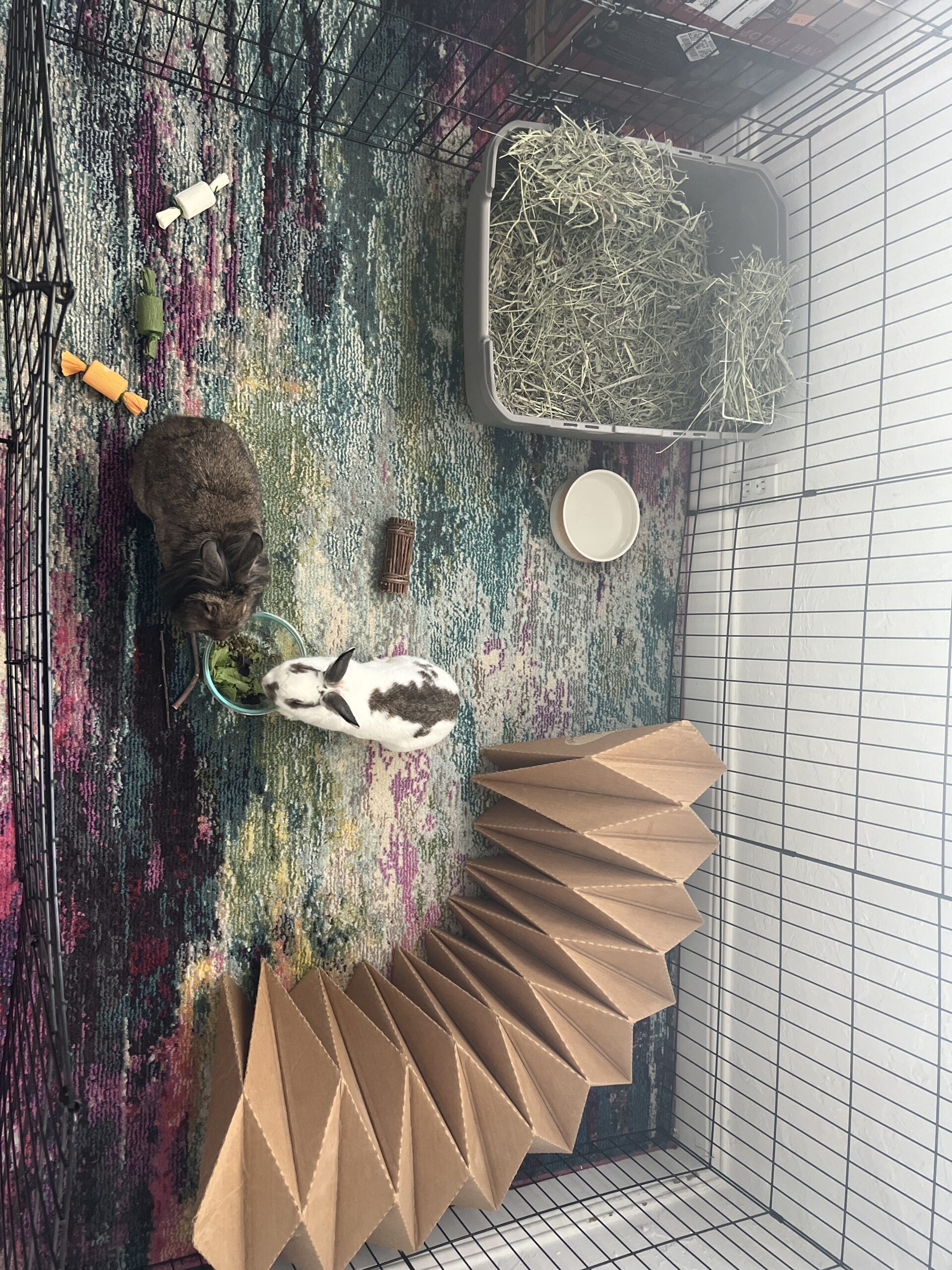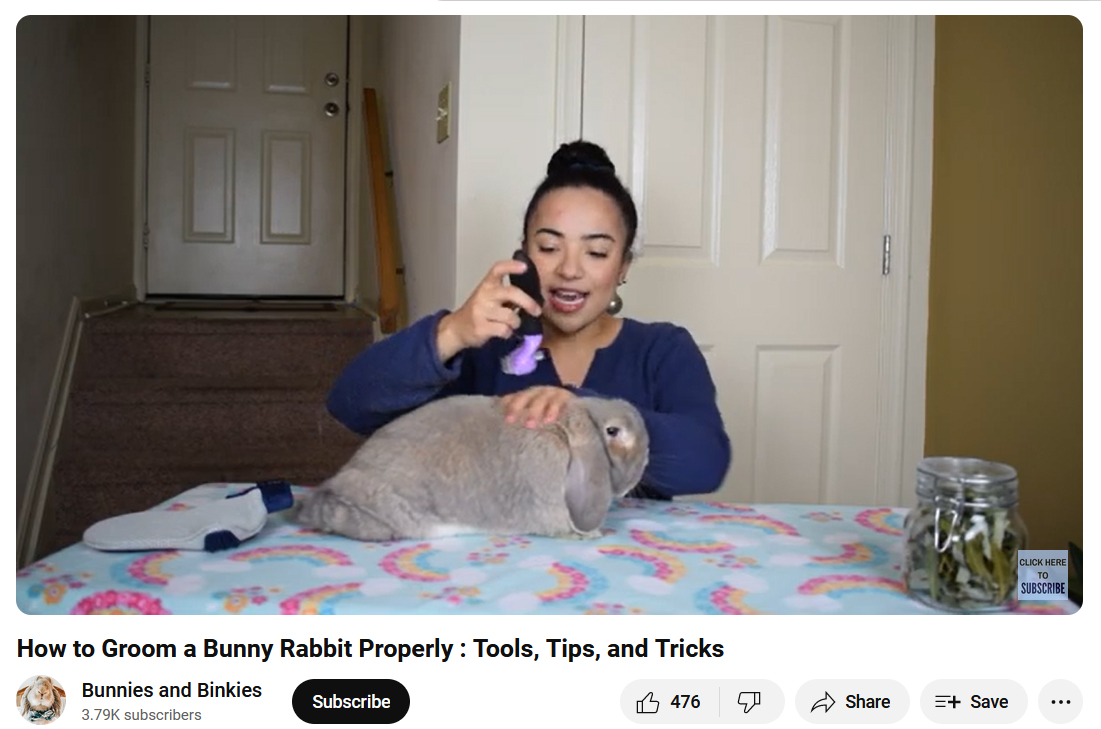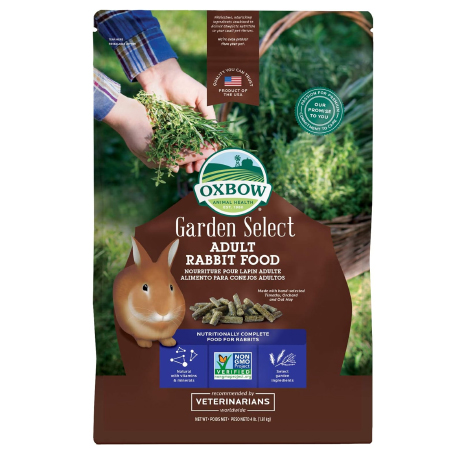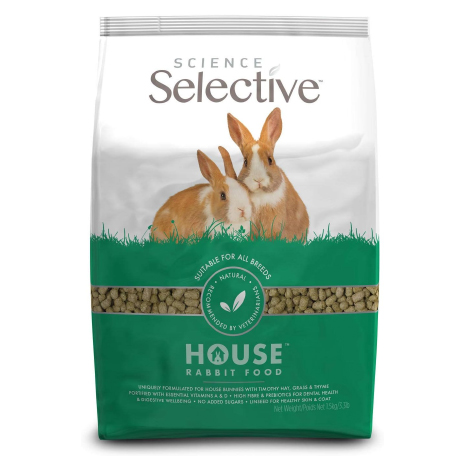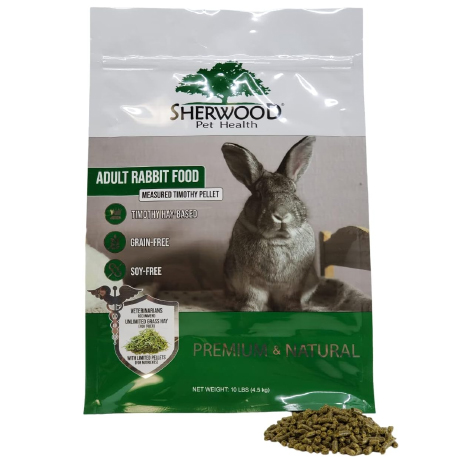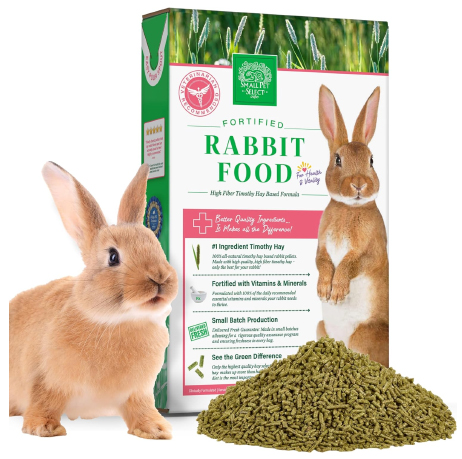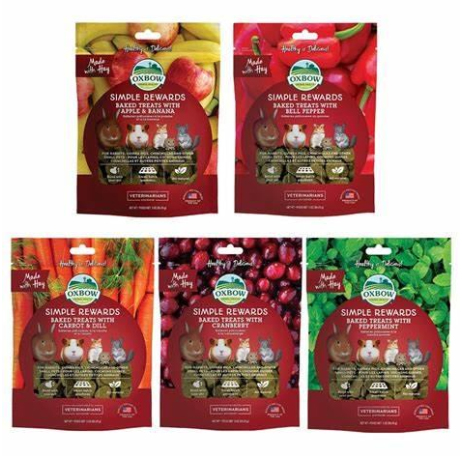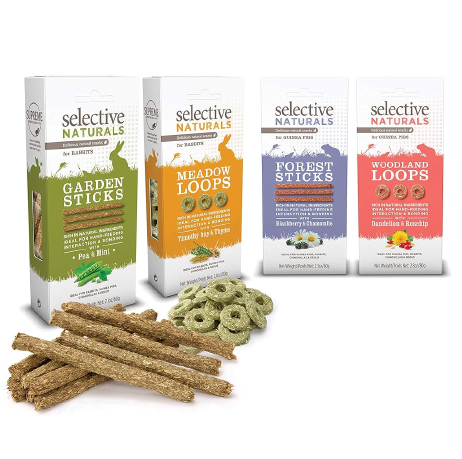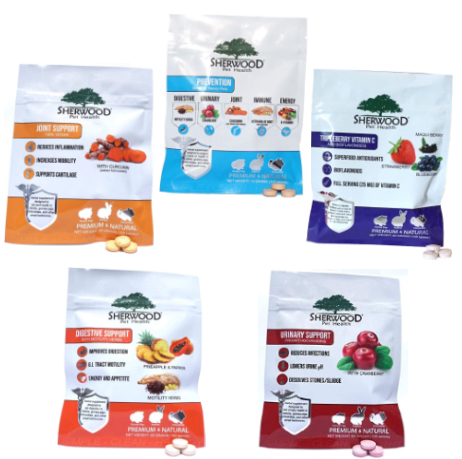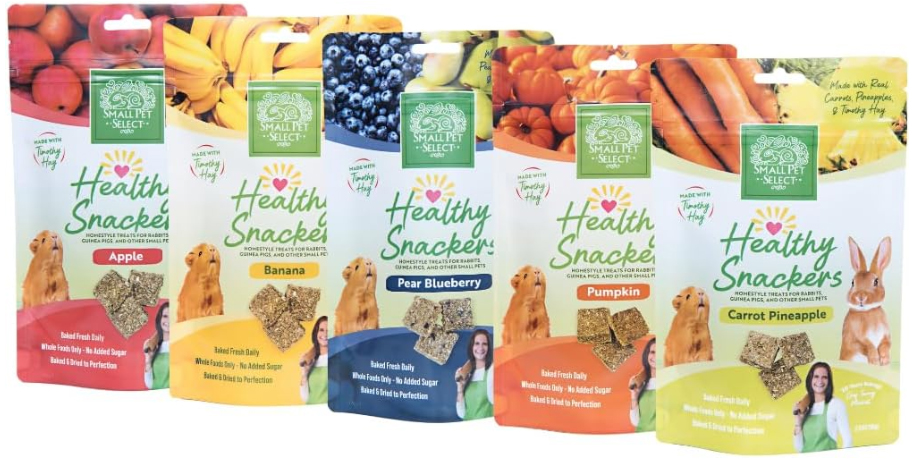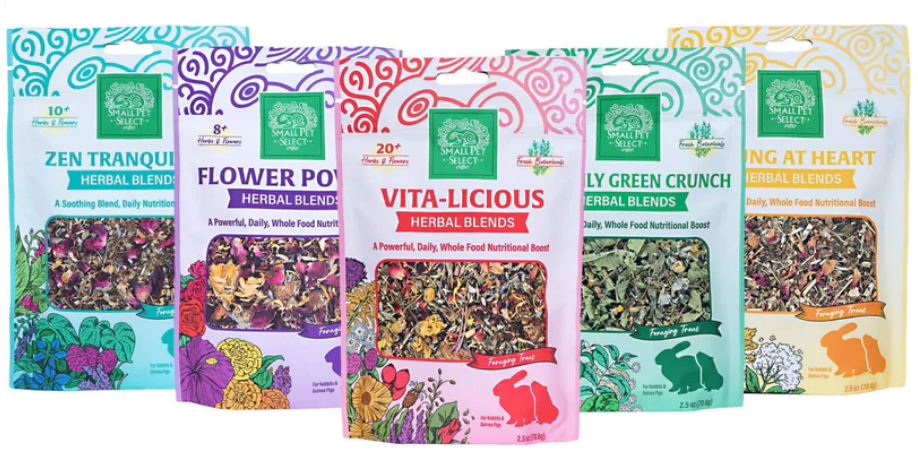Rabbit Care Guide
How Long Do Rabbits Live?
A well kept rabbit typically lives 8-12 years.
How Much Do Rabbits Cost to Own?
Initial Costs $200-300
The initial setup cost for a rabbit typically ranges from $200 to $300. This includes the purchase or adoption fee, which is about $25 to $100 per rabbit or more for “show” rabbits. A suitable habitat can cost between $45 and $100, and additional accessories like a carrier, litter box, water bowl, hidey house, tunnel, and toys will likely add around $75. Initial supplies like litter, hay, and food will be about $50.
Spay / Neuter Costs $400-600
Unless adopted from a reputable rescue or shelter rabbits will likely be unfixed. Rabbits are often sold by breeders and pet stores at just 8 weeks old and are sweet and docile at that age. However, just a few months later at 4 to 6 months old, hormonal changes can dramatically alter their temperament. They may become territorial and aggressive, lose litter box habits, and demonstrate mating behavior like honking, mounting and spraying urine. Many owners are then shocked to learn that the cost of spaying or neutering a rabbit can be as much, if not, more than a dog.
In South Florida, the average cost is $400 to $600 though some clinics and shelters may offer low cost spay/neuter services to the public for around $150 to $250. Check out our VETERINARIANS page for a list of low cost clinics and shelters.
Monthly Costs $80-200
The ongoing monthly expense for maintaining a rabbit includes litter, hay, food, treats, toys, and fresh produce, amounting to approximately $80 to $200. The amount will depend on the size of the rabbit, whether you choose conventional or organic produce, and the type of litter, food and hay.
Annual Costs $1,200-2,000
Rabbits should have an annual wellness exam and blood-work with an exotic veterinarian each year which costs around $150 to $300. Therefore, the total annual cost for maintaining a rabbit is typically around $1,200 to $2,000. This includes their regular check-ups and the monthly costs of food, litter, and other supplies.
In the event of a medical emergency, which is unfortunately common as rabbits are extremely fragile, the cost of emergency veterinary care can be $500 to $1,500.
Lifetime Costs $16,000-30,000
It’s also important to consider the lifespan of rabbits, which typically ranges from 8 to 12 years. The estimated lifetime cost for owning a rabbit could range from approximately $16,000 to $30,000.
Planning for this financial commitment is crucial to ensure that you can continuously provide the best care for your rabbit over their entire lifespan.
5 Factors That Affect Life Expectancy In Rabbits
1. Indoor/Outdoor Housing
The living conditions of a rabbit significantly impacts its life expectancy. Indoor rabbits, given a proper diet, appropriate enclosure, and regular veterinary care, can live between 8-12 years for dwarf breeds and 6-8 years for larger breeds. In contrast, outdoor rabbits face numerous hazards such as exposure to RHDV II, parasites (fleas, ticks, mites, worms, fly strike, and bot flies), predators, and unpredictable weather and temperatures, leading to a drastically reduced life expectancy of just 1-2 years! Even with supervision, the speed at which predators can attack makes taking rabbits outdoors for playtime dangerous. Rabbits, especially long-haired breeds and lop eared breeds, can start to overheat at just 76 degrees F.
2. Enclosure, Exercise & Enrichment
The size of a rabbit’s living space is also crucial for its health and longevity. A minimum enclosure size of 4ft x 4ft is recommended to allow for adequate movement and exercise. Small cages and hutches can lead to serious health issues, including obesity, heart disease, muscle atrophy, skeletal changes, dental issues from chewing on the cage, and infections from unsanitary conditions. Providing ample space, opportunities for exercise, and mental enrichment is essential to prevent these issues and promote a healthy, active lifestyle for your rabbit.
3. Diet
Hay should make up 80-90% of a rabbits diet and rabbits should have UNLIMITED access to fresh, high quality grass hay 24/7. Hay is vital for keeping a rabbits digestive system functioning and not eating enough can lead to GI stasis, a fatal condition where the digestive system slows and eventually stops. It is also necessary for wearing down a rabbit’s teeth which grow continuously throughout their life, 3-4 inches per year. It is also recommended to avoid “mix” or “gourmet” pellets containing nuts, seeds, and corn, as these can cause choking and digestive obstructions and free feeding pellets. Rabbits should be getting just 1/8 cup (2 tbsp) to 1/4 cup (4 tbsp) of pellets per day depending on their age and weight. Free feeding unlimited pellets can lead to obesity, significantly shortening a rabbit’s lifespan to just 4 years due to associated health complications like heart disease.
4. Veterinary Care
Regular veterinary care is critical due to rabbits’ fragile health and tendency to hide illnesses until they are severe. Annual wellness exams and bloodwork by an experienced exotic vet are necessary to monitor and maintain health. Immediate veterinary attention is crucial at the first sign of illness, as rabbits can deteriorate rapidly, potentially dying within 24 hours if they stop eating. Neglecting veterinary care due to cost or distance can result in preventable health crises and a painful, premature death for the rabbit.
5. Breed
Different rabbit breeds are genetically predisposed to certain health conditions. For instance, Netherland Dwarfs, Lionheads, and Lop-eared breeds often suffer from dental diseases due to their brachycephalic skulls, often needing regular dental trims or extractions in severe cases. Lop-eared rabbits also face higher risks of ear infections, respiratory issues, and liver torsion. Spotted rabbits, particularly those with mostly white coats and a few spots, are susceptible to megacolon. While Rex rabbits with their ultra fine fur are prone to sore hocks. Understanding and addressing breed-specific health risks through informed care and regular vet visits is vital for ensuring the rabbit’s health and longevity.
PRO TIP: Dutch rabbits and all black rabbits like the Havana seem to be the healthiest, least prone to health concerns and live the longest.
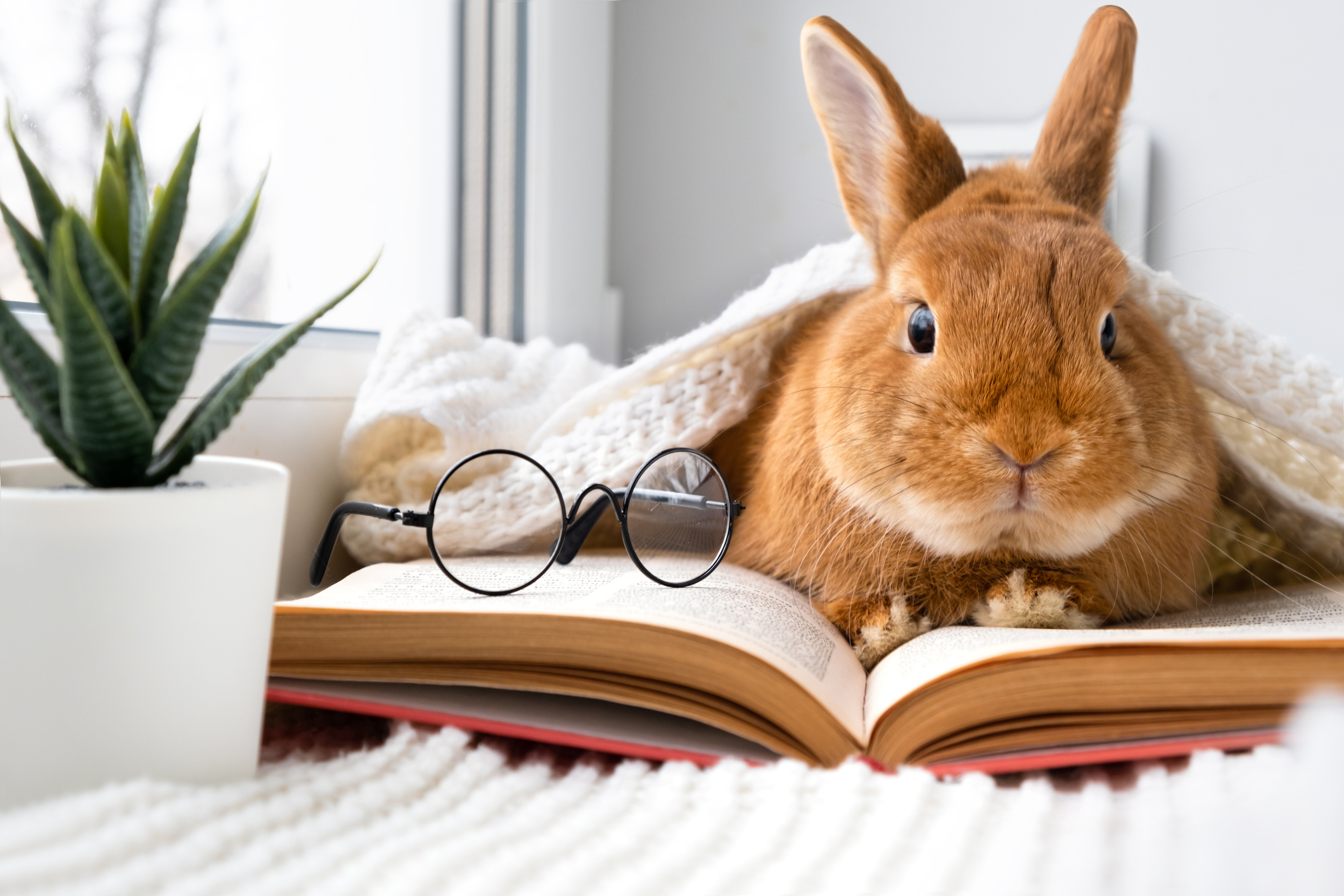
We created this guide to shine a light on the best care practices recommended by rabbit savvy exotic veterinarians and advocated by many rabbit rescues.
We’ll talk about:
- important lifestyle considerations for perspective rabbit owners
- factors that the effect life expectancy of rabbits
- how to bunny proof your room
- essential supplies to get before bringing a rabbit home
- what to feed your rabbit
- veterinary care needs and common health issues.
Our goal is to improve the quality of life of rabbits everywhere.
Preparation
Lifestyle Considerations
Bunny Proofing Your Room
Bunny proofing protects both your bunny and your belongings:
- Electrical Cables & Wires: Rabbits are notorious for chewing on ‘spicy hay’ a.k.a. dangerous electrical cables. Protect your rabbit from electrocution and yourself from having to explain what happened to the Ethernet cable by hiding electrical cables and wires behind furniture or covering them with heavy duty cord protectors. Other common victims are phone chargers, headphone cables, laptop cables, shoe laces, drawstrings of hoodies and sweatpants.
- Furniture and Baseboards: Wooden items such as furniture legs and baseboards are another common targets for a rabbit’s chewing. Protect these by blocking access with grids, pens or other protective barriers. As a natural deterrent, you can also wipe down these surfaces with diluted white vinegar before letting your rabbit out to free roam.
- Rubber and Plastic Items: Unlike wood, which is usually harmless, rubber and plastic can cause deadly intestinal obstructions if ingested. Ensure all such materials are removed from areas your rabbit will have access to or securely blocked off. Consider TV remotes, wheels of strollers, office chairs or carts, exercise weights, children’s toys and plastic baby toys. Plastic stacking cups and other baby toys can be used for supervised play time but should NOT be left in the rabbits enclosure all of the time.
- House Plants: Many common houseplants are toxic to rabbits and no, unfortunately, rabbits do not have the innate sense to not eat something that can make them sick. Here are a few to watch out for: poinsettias, lilies (including Easter lilies), onion, rhubarb, hydrageas, chrysanthemums, iris, ivy, daffodil, poppy, rhododendrons, both tomato and potato plants, yew, and cannabis. But even non-toxic plants can upset a rabbits digestive systems, leading to serious health issues like GI stasis. Be sure to remove or block access to any houseplants. Fake houseplants can also be dangerous if rabbits ingest the synthetic material.
- Temperature Control: Rabbits are extremely sensitive to temperature changes. Maintain ambient temperatures between 64-74°F to keep your rabbit comfortable. Be especially cautious with long-haired and lop-eared breeds, which can start to overheat at 76°F.
- Protect Your Soft Furnishings: Use waterproof blankets on your beds and couches to guard against any accidents that might occur as your rabbit settles in. Avoid pee pads as these end up getting chewed and ingested.
- Block Small Spaces: Rabbits love to squeeze into small spaces and can burrow into the undersides of couches and beds. Use C&C grids to block off these areas.
- Avoid Respiratory Irritants: Because rabbits have a very sensitive respiratory system, avoid smoking, vaping, and burning incense. Scented plug-ins and air freshener sprays should be avoided as they are toxic and can cause respiratory and neurological problems, and even death.
Weekly & Monthly Rabbit Care Routine
Daily Routine:
Feeding:
- Morning (around 7-8 AM): Provide a fresh serving of high quality hay and a portion of rabbit pellets.
- Evening (around 6-7 PM): Repeat the morning feeding routine and include a small amount of fresh leafy greens and vegetables.
Litter box and Area Maintenance:
- Morning and Evening (around feeding times): Remove soiled hay from the litter box. Add fresh hay directly into the litter box to encourage natural foraging and bathroom behaviors. Dump out the entire litter box every second or third day so that you can monitor how many poops the rabbit had in 24hrs and what they look like. This can help you catch and address illnesses early.
- Dedicate 15 minutes to tidying up the rabbit’s area each morning and evening. This includes picking up loose hay, litter, and stray poops, ensuring the space remains clean and comfortable.
Socializing:
- Spend quality time interacting with your rabbit during or after feeding times when they are most active. Aim for at least 15 minutes of dedicated socialization per session to build trust and familiarity.
Weekly Routine:
Deep Cleaning:
- Perform a thorough cleaning of the entire rabbit’s area once a week. This includes moving their pen and items to vacuuming their area rug. Washing any blankets or snuffle mats. Soaking their litter box with distilled white vinegar to remove residue. Checking their items and toys for wear to see if they need to be replaced. Wash food and water bowls with warm water and soap or pass through the dishwater.
- Once a month you move their area rug to sweep, vacuum and mop underneath.
Health Check:
- Conduct a basic health check to monitor your rabbit’s condition, including checking their eyes, ears, teeth, fur, nails, and weight. This regular monitoring helps catch any potential health issues early.
PRO TIP: Get a pet or baby scale and weight your rabbit each week. Keep a detailed log and talk to your veterinarian about any weight gain or loss.
I AM A
FOREVER
RABBIT
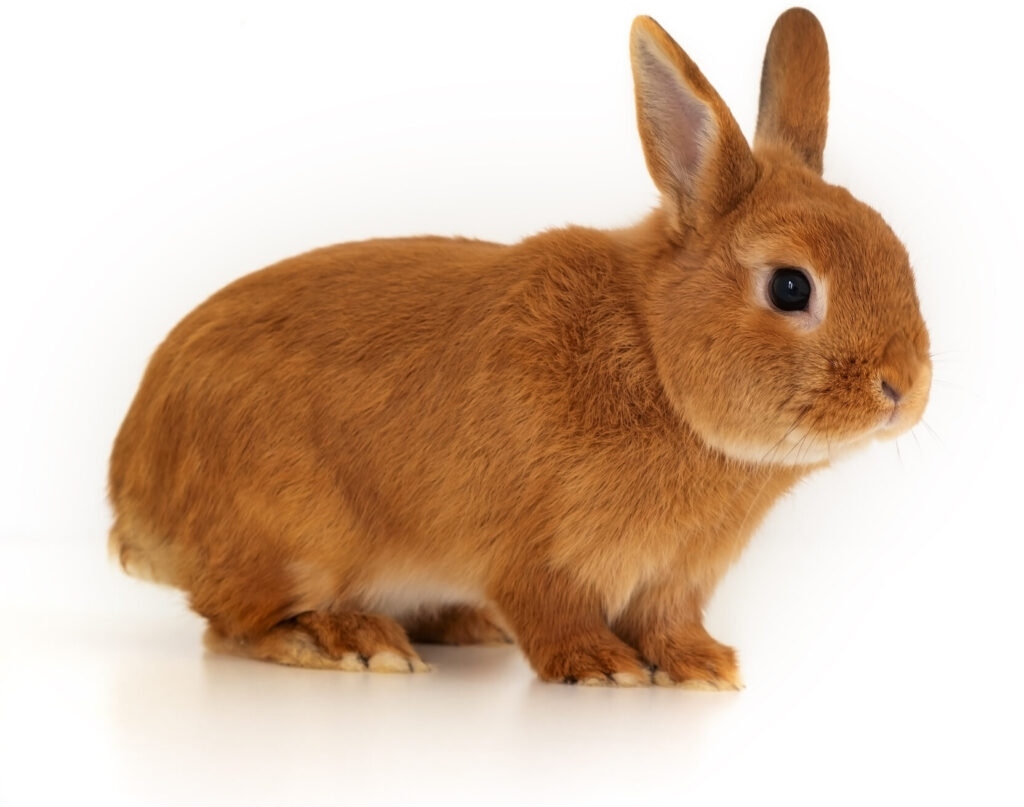
NOT A
- until you have to move
- until you have a baby
- until your kids get bored
- until you have no time
- until I get too old
RABBIT
Essential Supplies for Rabbits
How Much Space Do Rabbits Need?
A single dwarf rabbit needs a minimum 4ft x 4ft, 16sq ft living space when enclosed.
This will be their “home-base” for when you cannot supervise them. Rabbits will need to be let out of this enclosure for at least 3-4hrs per day to free roam and exercise in a bunny proofed room. For each additional rabbit (or 4lb of body weight), add 8-12sq ft to their living space to maintain a healthy and harmonious environment and prevent fighting and bulling due to resource guarding amongst multiple rabbits. Giant breeds will need an entire room to free roam all of the time.
4ft x 4ft, 16sq ft 1 dwarf sized rabbit (2-4lb)
4ft x 6ft, 24sq ft 1 medium sized rabbit (5-9lb) or a pair of dwarfs
6ft x 6ft, 36sq ft 1 large breed rabbit (10-14lb) or a pair of medium sized rabbits or a trio of dwarfs
FREE ROAM giant breed rabbits (15lb+)
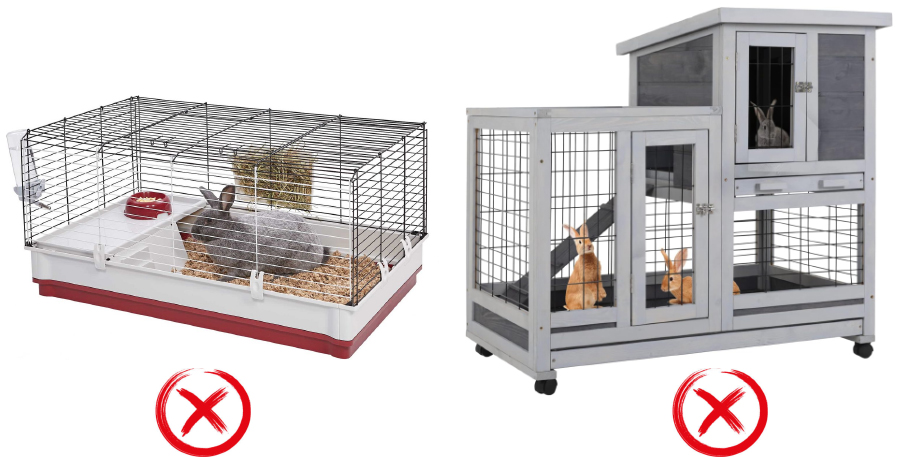
Cages and hutches DO NOT provide enough room for exercise and overall well-being for rabbits. Not providing enough space can lead to a host of problems due to depression and frustration. These often lead to rabbits pacing back and forth, cage chewing (which can damage their teeth), and cage aggression (growling, lunging and biting at hands that reach into their space or during cleaning). Health issues such as obesity, heart disease, muscle atrophy, skeletal changes, and infections are more common. Cages and hutches are also notoriously difficult to keep clean as rabbits end up using the entire space as a litter box.
Housing
- ENCLOSURE: (minimum size: 4ft x 4ft, 30-36in tall) We recommend the “MidWest Metal Dog Exercise Pen” or a similar metal play pen. You can get a “Pen Cover” if you have other pets that may try to jump in and can add “Additional Panels” to make the enclosure bigger for larger breeds or multiple rabbits.
NO: Cages, Hutches, or Dog crates of any size; Cloth and plastic play pens can be chewed through and are dangerous if ingested. - FLOORING: We recommend getting a 5ft x 7ft rug for you rabbits main area and smaller runners and rugs leading to different areas in the room or home. Rabbits tend to play “floor is lava” and avoid hard surfaces that don’t provide enough traction for them so they may not come out of their enclosure if that is the only place they have soft flooring.
NO: tile, wood, marble, or other hard surfaces these can lead to arthritis earlier in life; puppy pee pads or carpets with tassels or long fibers are an obstruction risk. - LITTER BOX: (minimum size: 14in x 18in) L or XL high sided cat liter box like the “Arm & Hammer Litter Box” or the “So Phresh Litter Box“.
NO: plastic or metal grids as these are not comfortable for rabbits feet and can cause sore feet, broken nails or toes if their feet get caught. - LITTER: “Oxbow Eco-straw” is the best at absorbing urine and covering odor; “Recycled Paper Pellets” are also good but must be unscented and have no baking soda; Oxbow, Small Pet Select and Kaytee offer “paper bedding” however this type of litter will need to be changed more often, doesn’t cover odors and may be more messy as rabbits tend to kick it out of the litter box when they jump out.
NO: clay or clumping cat litters; or soft wood shavings such as aspen, cedar, pine, walnut as these can cause skin, eye and respiratory irritation. - FOOD / WATER BOWLS: (minimum size: 3 – 5 cup capacity) Use a heavy ceramic water bowl for water. It should be heavy enough that the rabbit cannot fling it or tip it over, plastic and metal bowls are not heavy enough. Food bowls are optional. Food pellets can be scatter fed to encourage foraging and fresh greens can be hand fed to encourage bonding.
NO: water bottles or food / water bowls that have a rubber bottom that may get chewed. - HIDING AREA: As prey animals, rabbits need a safe place to run and hide. Give them a few “Cardboard Houses“, “Wooden Castles” and “Tunnels” to retreat to. “Etsy” has many wooden castles for rabbits.
NO: cloths hideys or pet beds, rabbits pee on soft things and these will get soiled. These materials can also be dangerous if ingested. If you rabbit nibbles on their tunnel, keep it out for supervised free roam time but don’t leave it in their enclosure. - CHEW TOYS and lots of them! Check out “Oxbow” “Binky Bunny” and “Etsy“. Providing safe things for you rabbit to chew, like apple wood sticks and willow balls, can reduce chewing on baseboards and wooden furniture. Chew toys should be varied and changed out daily to prevent boredom.
NO: salt/mineral licks; lava stones can damage their teeth and are dangerous if pieces are ingested; check toys weekly for exposed nails, plastic and hot glue. - ENRICHMENT: Get a “Snuffle Mat” and make your rabbit a “Dig Box” to encourage natural foraging and digging instincts, “Puzzle Toys” and “Treat Balls” helps stimulate their minds and encourage exercise.
- GROOMING SUPPLIES the amount of grooming your rabbit will need and the type of brush you will need is going to depend on if they are short-haired or long-haired. See below.
- FOOD a balanced diet consists of mostly hay, vegetables and greens, fortified pellets. See below.
Grooming
BATHING
Rabbits should NEVER be bathed. They are self-cleaning animals and groom themselves meticulously throughout the day. Their fur is designed to stay dry and insulated and bathing them is not only unnecessary but potentially very dangerous. Bathing a rabbit can lead to severe stress, shock, and hypothermia, which can be fatal. Their fur is also very dense and takes a long time to dry, this increasing the risk of them getting chilled or developing a respiratory infection.
If your rabbit does get dirty, you’ll need to clean them without getting them wet. You can use a damp cloth and a brush to spot-clean dirty areas, being sure to thoroughly dry the area afterwords and keep the rabbit warm.
If the rabbit is extremely soiled and requires a butt baths, this should only be done under veterinary supervision. Contact your veterinarian right away if your rabbit has incontinence or diarrhea, this is a medical emergency!
BRUSHING
As we mentioned above, rabbits are self-cleaning animals and groom themselves meticulously throughout the day. They groom themselves as much as cats, but unlike cats, rabbits cannot throw up hairballs. This can lead to deadly amounts of fur building up in their stomach or intestines. To help prevent this, it is essential to groom your rabbit regularly. Short-haired rabbits should be brushed for at least 15 minutes each week, divided into 2-3 sessions of about 5 minutes each. Long-haired breeds like lionheads and angoras should be brushing daily to prevent painful matting. They may also need to be professionally groomed or shaved every couple of months.
SHED SEASON: Rabbits shed excessively twice a year, in spring and fall. They molt and replace their entire coat! During these periods, daily grooming becomes necessary even for short-haired breeds. It is also important to monitor your rabbit’s droppings for “garlands” or “strings of pearls,” where fecal pellets are connected by fur. This indicates that your rabbit is ingesting a large amount of fur and is at risk for a potentially fatal obstruction. If you notice this, increase grooming frequency.

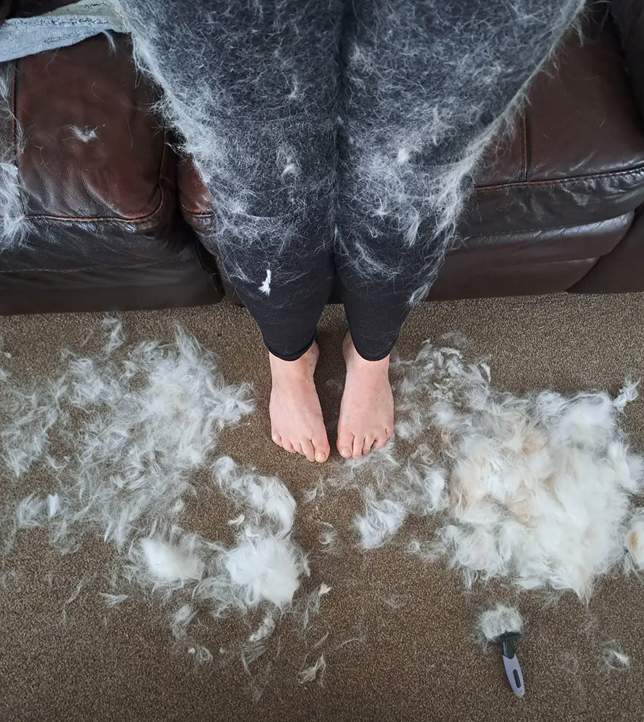
We recommend: “Small Pet Select Hair Buster Comb” for long-haired breeds and “FURminator deShedding Tool” for short haired breeds. Most “grooming kits” for small animals are not effective at removing fur and cat brushes with sharp metal points can scratch a rabbits delicate skin.
NAIL TRIMS
Trim, or file, your rabbits nails every 2-3 months. You will need a pair of small animal nail clippers and styptic powder to stop any accidental bleeding. Make sure to identify the quick (the pink part inside the nail) and trim just the tip, avoiding the quick to prevent bleeding. If you accidentally cut the quick, apply styptic powder to stop the bleeding.
We recommend: “Pet Nail Clippers” and “Kwik Stop Styptic Powder“.
PRO TIP: offer treats during and after nail trims and grooming sessions.
Rabbit Feeding Guide
Recommended Diet

HAY
80-90% of a rabbit’s should be hay. Rabbits should have UNLIMITED access to fresh high-quality hay 24/7. Soiled hay should be changed out daily.
- Juvenile rabbits (up to 6 months): Alfalfa Hay
- Adult rabbits (6 months +): Timothy Hay
PRO TIP: “Oxbow” and “Small Pet Select” offer a variety of high quality hays (oat, botanical, orchard) if you would like to offer diverse flavors and textures in addition to western timothy hay.

LEAFY GREENS & VEGETABLES
10% of a rabbit’s diet should be green leafy vegetables. Organic vegetables (no pesticides) are recommended whenever possible. Always remove seeds as these are a choking risk.
- Juvenile rabbits: can start to have small amounts of vegetables introduced into their diet at 3 months old. Vegetables should be introduced gradually, one per week, so that you can monitor for sensitivity or stomach upset. If any vegetable seems to cause digestive problems do not feed it in the future.
- Adult rabbits: can have 1-2 cup (a small pinch) of leafy greens and 1-2 tablespoon of non-leafy green vegetables per day.
You can feed 1-2 cup of green leaf, red leaf and butter leaf lettuces daily. Other leafy greens like romaine, spinach, kale, turnip greens, dandelion greens, arugula, bok choy, and watercress and herbs like cilantro, basil, parsley, mint, and dill can be offered for variety 1-3 times per week.
You can also feed 1-2 tablespoon of the following non leafy vegetables: bell peppers, celery (remove veins or cut into small pieces), cucumber, green beans, broccoli, brussel sprouts and radishes.
If your rabbit’s poops become small, dark, or smelly this amount should be reduced to every other day or 3 times per week. Read this: “Guide to Rabbit Poop“

FOOD PELLETS
5% of a rabbit’s diet should be fortified food pellets.
- Baby rabbits (up to 3 months): unlimited alfalfa based pellets.
- Juvenile rabbits (3-6 months): 1/4 cup of alfalfa based pellets.
- Adult rabbits (6 months +): 1/8 cup (2tbsp) of pellets per 2lb of body weight.

Less than 5% of a rabbit’s diet can be fruits and treats. Rabbits shouldn’t get more than 1-2 teaspoon size servings of fruits per week. That’s about the size of 1 strawberry or 1 baby carrot PER WEEK.
Carrots, apple, berries (strawberries, blueberries, raspberries), orange, banana, pear, grapes (cut), kiwi, mango, papaya, peach, pineapple, apricot, tomatoes, watermelon, cantaloupe.
Always remove seeds and pits. Offer watery fruits like watermelon and cantaloupe sparingly as they can cause diarrhea.
We recommend: “Oxbow“, “Science Selective“, “Small Pet Select” or “Sherwood“.
Avoid: nuts, seeds, corn, grains, dairy, fillers, artificial colors and added sugars.
“Mix” pellets and treats with seed and corn can lead to chocking and malnutrition due to selective eating. The first ingredient listed for pellets should be timothy hay for adult rabbits or alfalfa hay for young rabbits.
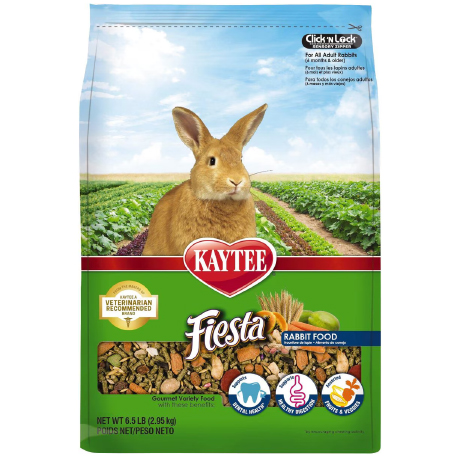
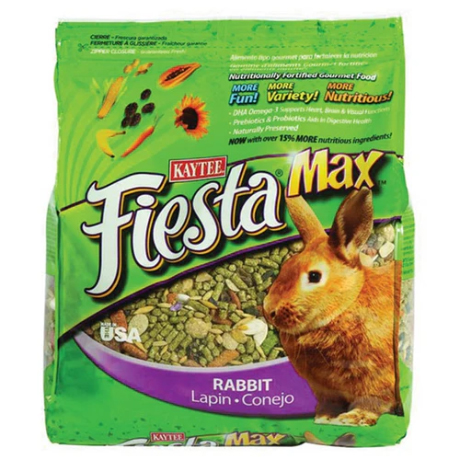
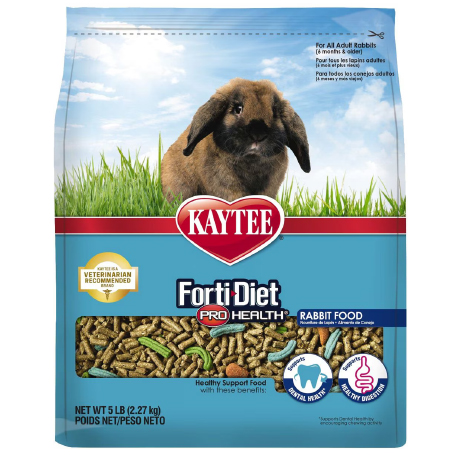
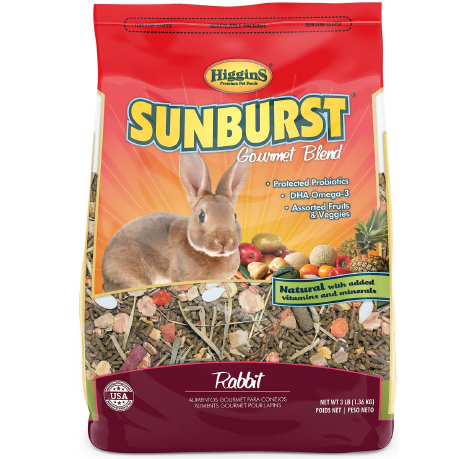
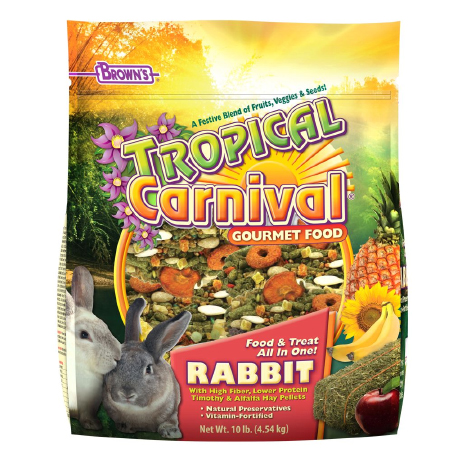
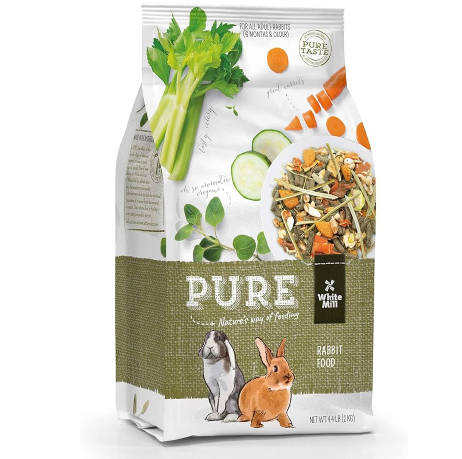
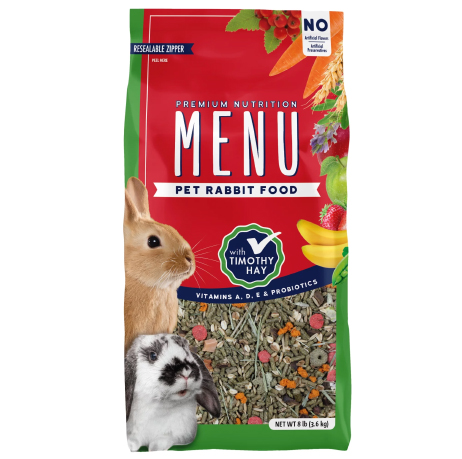
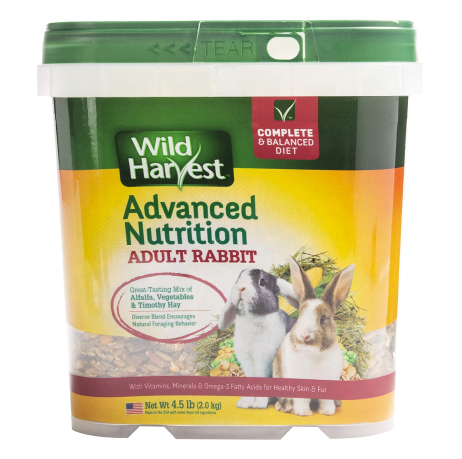
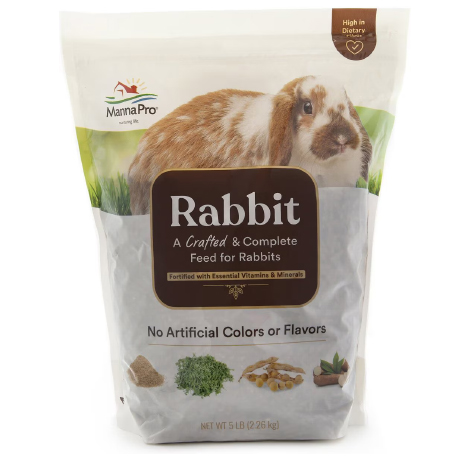
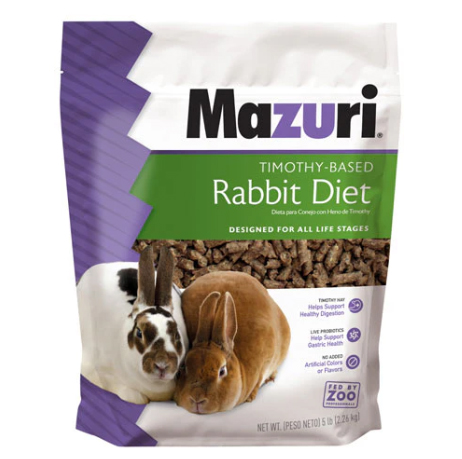
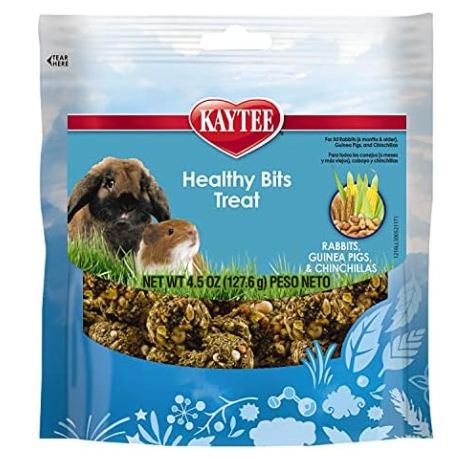
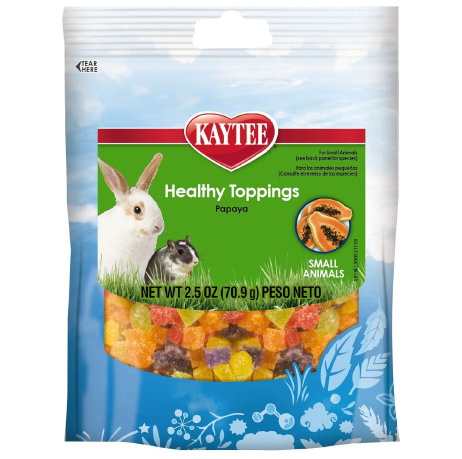
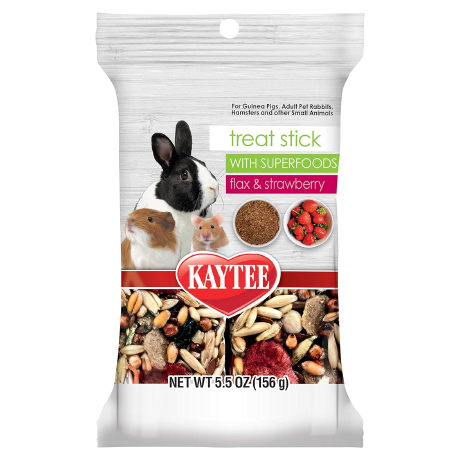
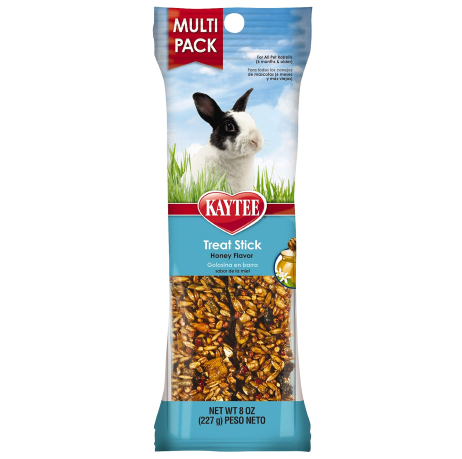
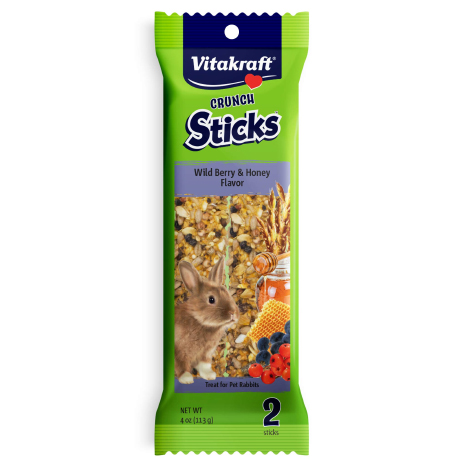
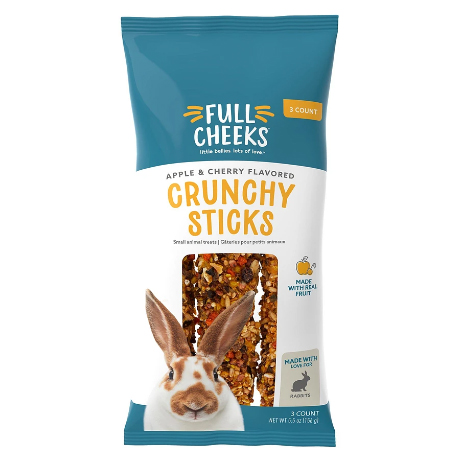
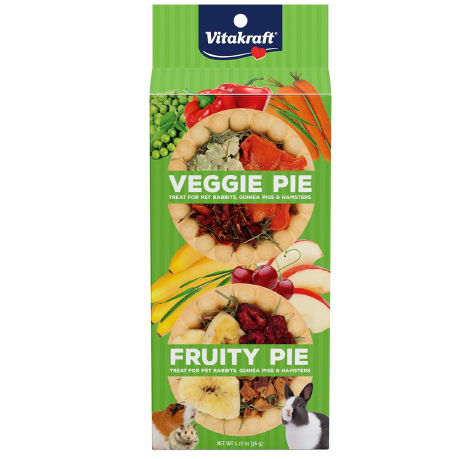
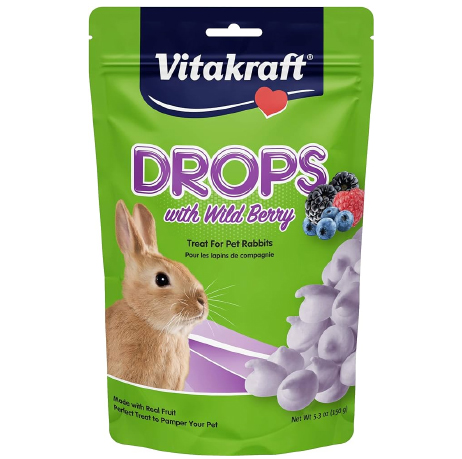
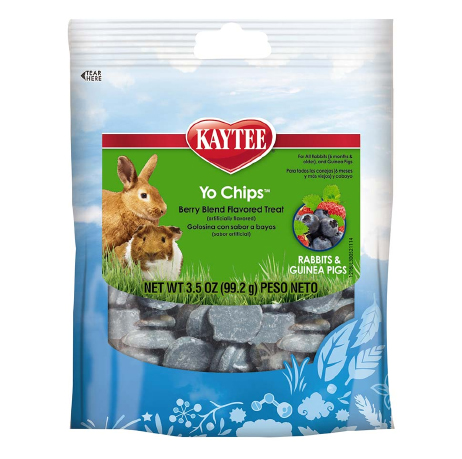
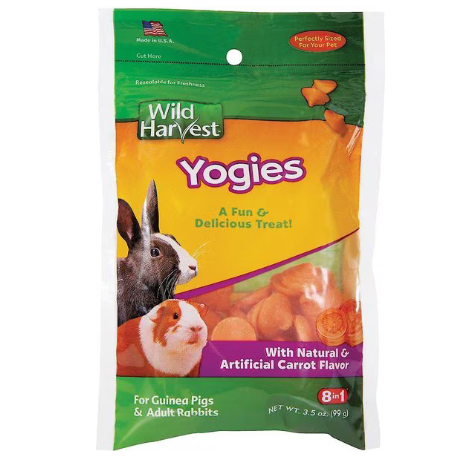
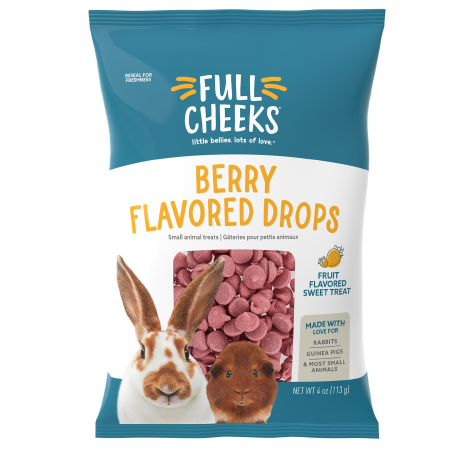

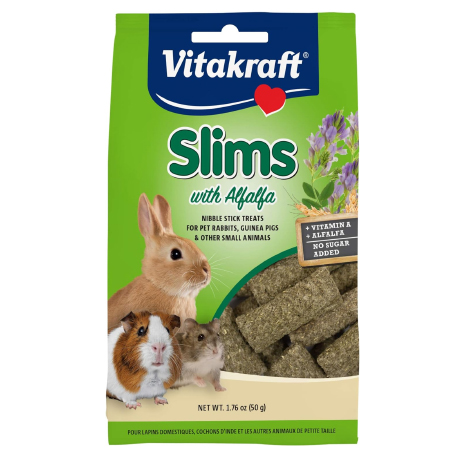
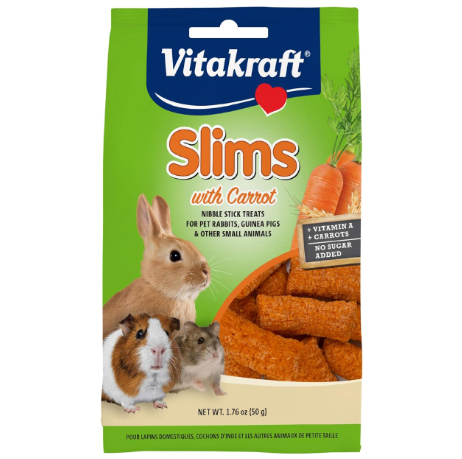

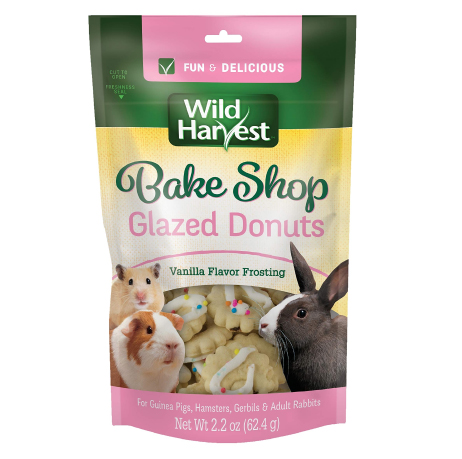
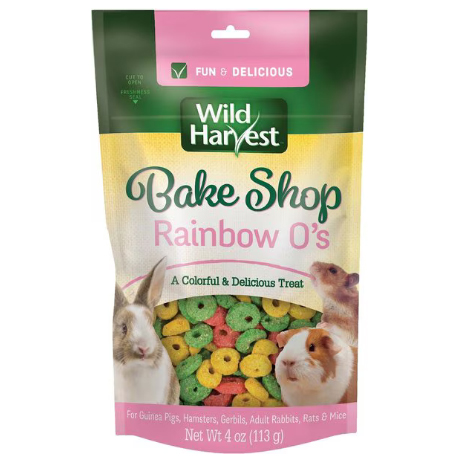
THIS IS NOT A COMPLETE LIST OF ALL AVAILABLE FOOD PELLETS AND TREATS BUT SHOULD HELP YOU TO HAVE A BETTER UNDERSTANDING ABOUT WHICH BRANDS AND INGREDIENTS MAY NOT BE SUITABLE FOR RABBITS.
Contact Us if you have a specific question about food pellets or treats.
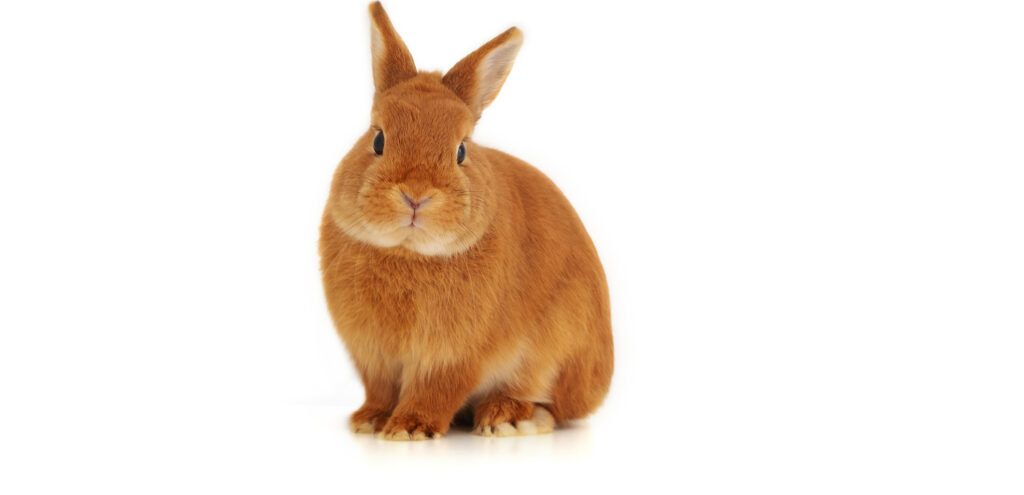
Veterinary Care
Veterinary Care for Rabbits
What Is Rabbit Hemorrhagic Disease Virus (RHDV II)?
Rabbit Hemorrhagic Disease Virus (RHDV) is a calcivirus that specially affects rabbits. It is highly contagious and can be transmitted amongst both wild and domestic rabbits. The virus is transmitted through the urine, feces, and respiratory secretions of rabbits that are infected, or those that survive for up to 2 months. It can also be brought inside the home on dirt, leaves, flowers, or insects that have come in contact with an infected rabbit’s fur, feces or urine.
There is no cure and if contracted the fatality rate is as high as 70-90%. Death occurs within just 3-5 days of contracting the virus.
The virus traveled from Europe to the United States in 2020 and it is considered an epidemic. All states now offers annual vaccines for RHDV. Vaccinating your rabbit, keeping them strictly indoors and taking your shoes off by the door are important ways to keep your rabbit safe from this deadly disease.
Do Rabbits Need to See a Veterinarian Every Year?
Yes! As prey animals rabbits instinctively hide signs of illness and do so very well. They should get a wellness exam, with blood work, every year with an experienced exotic veterinarian even if they “seem healthy.” This way illnesses can be caught and treated in the early stage. By the time symptoms become obvious it may be too late or much more difficult to treat; requiring more advanced and costly treatments. You should never ignore symptoms or try to treat rabbits at home yourself. “Home remedies” are no substitute for veterinary care and are often dangerous.
When rabbits are six years old they are considered senior pets and should visit an exotic vet twice a year. X-rays determine if arthritis is present and lifelong pain management may be advised.
Cost of Veterinary Care for Rabbits
A physical exam with an experienced exotic veterinarian may cost $75-$105 in Florida. During a typical physical exam the veterinarian will document the weight and vital signs (temperature, heart and respiratory rates), listen to the heart and lungs, use a scope to look at the eyes and nose and inside the mouth and ears, etc. It is important that the veterinarian is experienced with properly handling exotic animals like rabbits because they have fragile spines and are difficult to keep calm and safely restrain. Improper handling can lead to stress and spinal injuries.
Because rabbits hide signs of illness, blood work should be performed every year to check the functioning of internal organs, this can be an additional $150-$300. In the case of a suspected injury or illness, veterinarians may need to perform diagnostic x-rays which can cost $250-$450. If surgery is needed, depending on the length and complexity it may range from $900 – $1600 or more.
The average cost of a spay/neuter surgery in Florida is $400-$600.
It is recommended to have a medical savings account of $1000 per rabbit for emergencies.
Another option is to GET PET INSURANCE WITH NATIONWIDE or APPLY FOR CARE CREDIT to get 6 months interest free financing for unexpected costs.
Rabbits are considered exotic animals and should only be seen and treated by an experienced exotic veterinarian. Although some veterinarians who treat cats and dogs ALSO treat rabbits and may advertise as treating “all animals” they:
— See exotics at a much smaller volume than exotic vets. An exotic hospital can see 20 to 50 exotic animals in a day, on average a regular veterinary practice may see as little as one to five exotic pets a week.
— May not be trained on proper handling techniques or have appropriately sized equipment. The instruments needed to look into a rabbit’s ear, mouth or nose are much smaller than those for cats and dogs.
— May be able to perform a routine wellness exam and diagnose an illness but not be able to perform complex procedures. At which time they may recommend humane euthanasia or refer to an exotic specialist for further treatment. This delay in treatment can be deadly in the case of liver lobe torsion, obstruction, or dental abscesses; some of the common emergencies that rabbits face.
— Many do not attend annual exotic veterinary conferences. Staying up to date is important as treatment protocols change year to year. Veterinarians who do not specialize in exotics may recommend a treatment that is outdated and no longer considered effective or safe.
— May prescribe doses or medications that are not safe for exotic species. The wrong dose or type of antibiotic or anesthesia can be deadly. (READ MORE ABOUT ANTIBIOTICS)
Rabbits should be taken to exotic veterinarians because these specialists are statistically able to catch things earlier and are significantly more likely to be able to diagnose AND treat a variety of illnesses successfully. Check out our VETERINARIANS page for a list veterinarians.
PRO TIP: Look for “Exotic” in the name of the clinic or hospital.
Gastrointestinal (GI) Stasis
GI Stasis is the slowdown or complete cessation of “peristalsis” which is the involuntary contraction and relaxation of the muscles of the intestine that propels food through the digestive tract. GI stasis is a common and potentially life-threatening condition in rabbits. It is not a spontaneous occurrence but a symptom of something in the rabbit’s diet or environment that causes it to stop eating.
GI stasis can be caused by:
- Improper Diet: Insufficient dietary fiber, not eating enough hay, and high carbohydrate intake can disrupt normal GI motility.
- Obstruction and Blockages: Not enough grooming can lead to hair ingestion, contributing to blockages. Blockages due to hairballs or foreign objects can block digestive functions.
- Lack of Exercise: Sedentary lifestyle due to restricted space or lack of interaction can slow down the digestive system.
- Stress: Environmental stressors such as changes in habitat, loss of a companion, or loud noises can cause rabbits to stop eating.
- Pain: Pain from dental disease, urinary tract infections, or other underlying medical conditions can lead to decreased appetite and subsequent GI stasis.
- Dehydration: Inadequate water intake can lead to dry, impacted feces, hindering normal gut movements.
Symptoms:
GI Stasis is often referred to as the “silent killer” because the symptoms can be very subtle. Keep an eye out for any changes in appetite, fecal output, energy level and behavior as these can indicate there is a underlying health issue.
- Anorexia: Inappetence, refusal to eat or a significant decrease in appetite
- Lack of or Abnormal Fecal Production: Presence of small, dark, hard fecal pellets. Little to no fecal output for 8 hours or more.
- Teeth Grinding: Teeth grinding is a sign of pain, it is different then teeth purring.
- Lethargy or Hiding: General sluggishness, decrease in usual activity or hiding behavior can indicate discomfort or pain.
- Signs of Discomfort: Pressing their belly to the floor or frequency shifting positions as if they cannot get comfortable
Diagnosis:
A veterinarian will be able to determine if your rabbit is in stasis by palpating their abdomen. They will need to perform further testing, usually blood-work and x-rays, to be able to determine the exact cause.
- Physical Examination: Palpation of the abdomen to determine if there is an obstruction or other underlying medical condition causing inappetence.
- Blood Tests: To evaluate overall health and identify potential underlying conditions.
- Medical History: Inquiry into the rabbit’s diet, environment, and recent changes or stressors.
- Imaging: X-ray imaging or ultrasound of the gastrointestinal tract.
Treatment:
Treatment aims to restore normal GI motility while addressing underlying causes.
- Analgesics: Pain relief to address discomfort and encourage normal eating behaviors.
- Fluid Therapy: To rehydrate the rabbit and soften impacted feces.
- Motility drugs: Medications to stimulate gut motility.
- Nutritional Support: Providing critical care formulas or syringe feeding to ensure adequate caloric intake.
- Environmental and Dietary Management: Stress reduction, increased dietary fiber, and proper hydration are crucial for recovery and prevention.
Prognosis & Prevention:
The prognosis for rabbits with GI stasis depends on how quickly it is caught and treated as well as the underlying cause. Early intervention typically results in a favorable outcome, while delayed treatment can lead to severe complications such as gut perforation, sepsis, and death.
Preventative measures include:
- Diet: Ensuring a high-fiber diet primarily consisting of hay, with limited pellets and fresh vegetables. Monitoring and ensuring that rabbits are eating and monitoring fecal output.
- Grooming: Routine grooming to limit hair ingestion.
- Exercise: Providing ample space and opportunities for physical activity.
- Stress Reduction: Minimizing environmental stressors and providing a stable, quiet home.
- Routine Health Checks: Annual veterinary exam with an experienced exotic veterinarian to catch and treat any health issues promptly.


